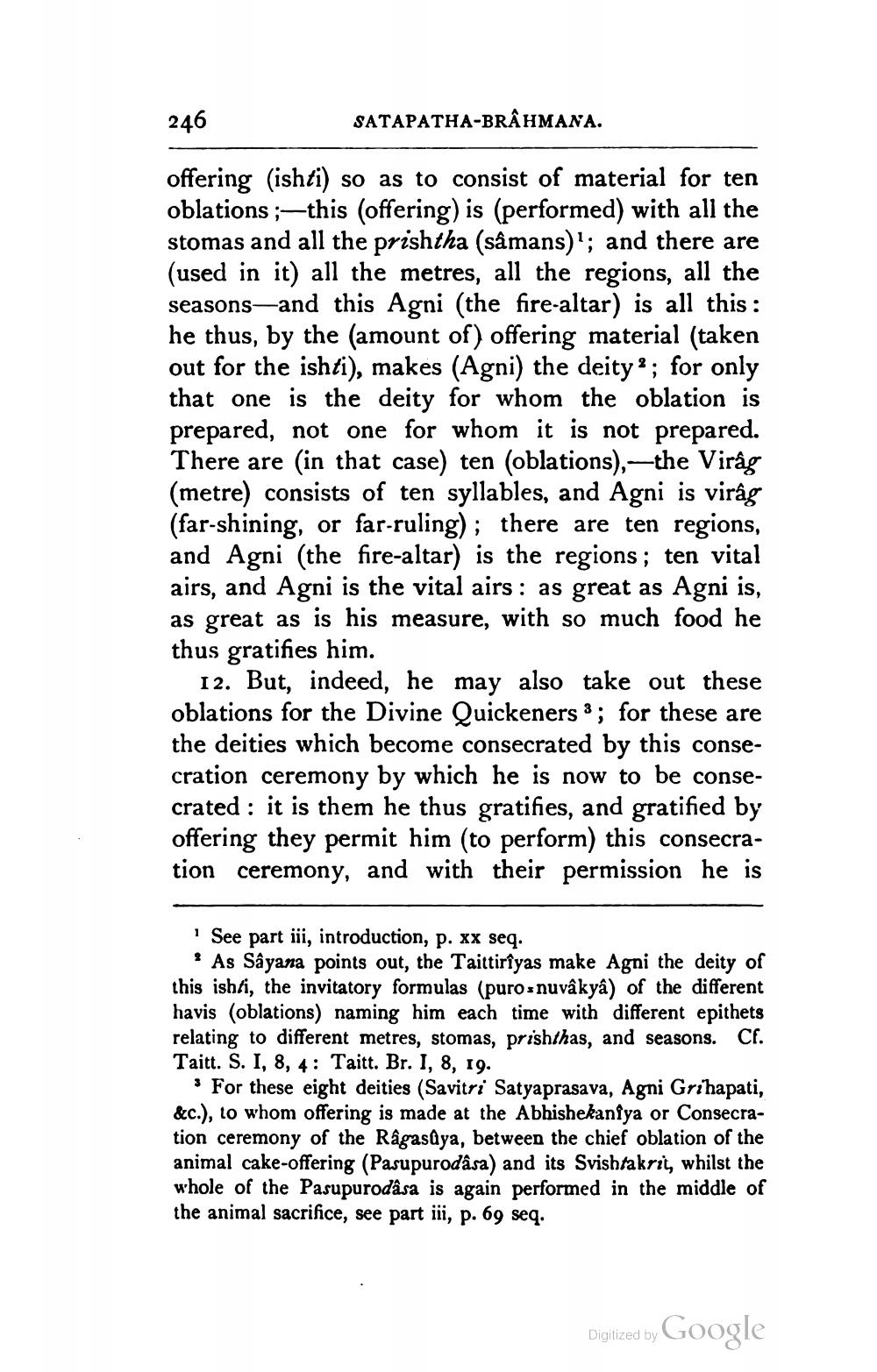________________
246
SATAPATHA-BRAHMANA.
offering (ishti) so as to consist of material for ten oblations ;—this (offering) is (performed) with all the stomas and all the prishtha (såmans)"; and there are (used in it) all the metres, all the regions, all the seasons—and this Agni (the fire-altar) is all this: he thus, by the (amount of) offering material (taken out for the ishti), makes (Agni) the deity? ; for only that one is the deity for whom the oblation is prepared, not one for whom it is not prepared. There are (in that case) ten (oblations),--the Virág (metre) consists of ten syllables, and Agni is virág (far-shining, or far-ruling); there are ten regions, and Agni (the fire-altar) is the regions; ten vital airs, and Agni is the vital airs : as great as Agni is, as great as is his measure, with so much food he thus gratifies him.
12. But, indeed, he may also take out these oblations for the Divine Quickeners 3; for these are the deities which become consecrated by this consecration ceremony by which he is now to be consecrated : it is them he thus gratifies, and gratified by offering they permit him (to perform) this consecration ceremony, and with their permission he is
i See part iii, introduction, p. xx seq.
? As Sâyana points out, the Taittirîyas make Agni the deity of this ishti, the invitatory formulas (puros nuvâkya) of the different havis (oblations) naming him each time with different epithets relating to different metres, stomas, prishthas, and seasons. Cf. Taitt. S. I, 8, 4: Taitt. Br. I, 8, 19.
* For these eight deities (Savitri Satyaprasava, Agni Grihapati, &c.), to whom offering is made at the Abhishekaniya or Consecration ceremony of the Râgasaya, between the chief oblation of the animal cake-offering (Pasupurodása) and its Svishtakrit, whilst the whole of the Pasupurodåsa is again performed in the middle of the animal sacrifice, see part iii, p. 69 seq.
Digitized by Google




